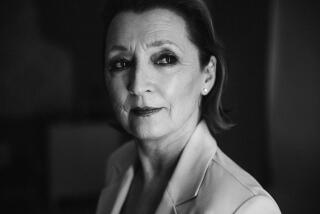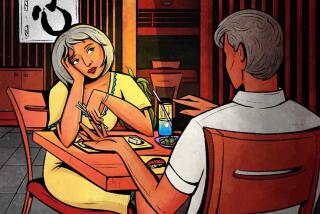Commentary: The princess problem
- Share via
For all the high-octane “wedding mania” that began the moment the engagement of Prince William and Kate Middleton was announced, there has been a palpable uneasiness to much of the coverage, a collective awkwardness like that following the announcement of an unexpected pregnancy — sooo, is this good news or bad?
Mostly it’s a princess problem. As exciting, or upsetting, as having a non-royal wed a prince might be to a certain generation of Britons, Americans have a very different attitude toward princesses than they did 30 or even 10 years ago.
Certainly the ghost of the late Princess Diana is one cause. Once the embodiment of beauty and glamour, Diana’s face now conjures sorrow and regret, even when used simply to compare fetching hats with her would-have-been daughter-in-law.
More important, in the years between that wedding and this, the princess ethos has changed dramatically. Just ask Disney, which after years of making millions off the princess brand, recently announced that it was done with animated princesses. This is a bit like Ford saying it is done with cars, but the fact is that no one over the age of 4 is buying any more; who wants a tiara when every Libby-Lu-party-surviving tween understands that they have become symbols of irony if not downright camp?
Even as Disney packaged and repackaged Snow White, Sleeping Beauty and Belle, trying to convince the world that Mulan was royalty, DreamWorks gave us “Shrek,” and Princess Fiona, who surrendered her sylph-like human form to become an insect-eating, swamp-domiciled ogre. Disney films, including “The Princess Diaries,” “Princess Protection Program” and “Enchanted,” may not have gone that far, but they exposed both the hard work and silliness of the traditional tropes just the same. In “The Princess and the Frog’s”, Princess-to-be Tiana was more Studs Terkel than Cinderella, constantly reminding her dissolute prince of the value of hard work and winding up a restaurateur, and the breadwinner of the family.
In many ways, Diana began the princess boom and the princess bust, looking up at the world through lowered lashes and besotting us all with her shy ways before ripping the curtain apart to reveal the infidelity and bulimia, the cold-hearted calculation and resultant hysteria, the sheer prickly weight of all those sparkly gems.
Who wants to be a princess when it means giving birth at your husband’s convenience or having your every move captured by the camera, your weight and hair style and body language deconstructed by the tabloids? Who wants to be a princess if it doesn’t protect you from the humiliation of having graphic taped phone conversations between your husband and his mistress made public? Who wants a job that involves entertaining Piers Morgan at tea?
Nevermind the tired argument about our having fought a revolution to dismiss these people from our lives — how are we supposed to get excited about this wedding after Helen Mirren’s chillingly dry-eyed performance in “The Queen”? And let’s not even get started on former Duchess of York Sarah Ferguson, a train wreck of Dickensian proportions with plans to star in her own reality show.
Is this what we want for Kate Middleton, a young woman so thoroughly middle class she is being called “practically American”?
No, it is not. The media may have recovered from the near fatal breast beating that followed Diana’s death by celebrity, but many still struggle with lingering guilt, which is why everyone is bending over backward to point out the many ways in which Kate is not Diana. The fact that Middleton, at 29, is 10 years older than Diana was when she wed is mentioned with the frequency and promptness of Transylvanian villagers making a sign against the evil eye, as if Diana’s fate in that Paris tunnel could have been avoided had she not been such a young bride.
Indeed, so much emphasis has been placed on the ordinary nature of Will and Kate’s courtship — they met in college, broke up, reunited, and now live together in Wales where he’s in the army and she makes dinner — that the other dampening effect on the coverage is sheer dullness.
It’s not like when Charles, middle-aged and having made his way through countless potential brides, finally chose a teenager so unsophisticated that a photograph of her legs backlighted through a thin skirt almost proved her undoing. Middleton may have been a shy child, but she strutted down a college catwalk in her underwear knowing that the heir to the throne was in the audience, and if she isn’t a career gal, she appears to be much more pragmatic than romantic.
Which she would have to be. Middleton came of age in a post-Diana world, in which princesses can turn out to be ogres or chefs, expected to fight and work. Far from being swept off their feet and cradled into the happily ever after, these young women are expected to keep their men on the straight and narrow. Even Lego has added a shield and sword to its princess accoutrement. Because these days, a princess needs all the help she can get.
More to Read
Sign up for The Wild
We’ll help you find the best places to hike, bike and run, as well as the perfect silent spots for meditation and yoga.
You may occasionally receive promotional content from the Los Angeles Times.











